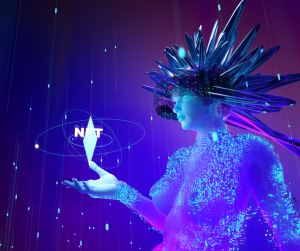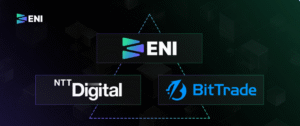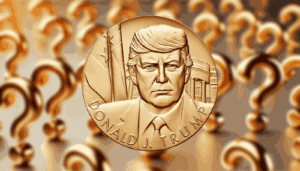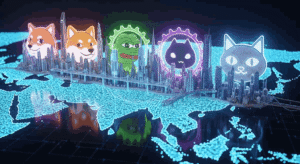As the world increasingly digitizes, new opportunities have arisen for the tokenization of physical assets. NFTs, or non-fungible tokens, have recently gained immense popularity in the digital art world, but their potential goes far beyond that. In this article, we will explore the concept of tokenization and how NFTs can be used to tokenize physical assets, providing new opportunities for ownership, investment, and transferability.
What is Tokenization?
Tokenization is the process of representing a physical or digital asset as a digital token on a blockchain. A token is a digital representation of ownership or value that is recorded on a blockchain ledger. This ledger is decentralized and transparent, meaning that each token can be traced and verified, making it virtually impossible to duplicate or tamper with.
Tokenization has many applications, from digitizing currencies to representing real-world assets like property, art, and even wine. By tokenizing assets, ownership can be verified, and value can be transferred seamlessly and efficiently. This allows for greater liquidity and accessibility, opening up new markets and investment opportunities.
The Benefits of Tokenization
Tokenization has several benefits, including:
- Fractional ownership: Tokenization allows assets to be divided into smaller portions, enabling fractional ownership. This means that individuals can own a portion of an asset, making it more accessible to a wider range of investors.
- Increased liquidity: Tokenization enables assets to be traded on decentralized marketplaces, making them more liquid and easier to buy and sell.
- Reduced transaction costs: Traditional asset transfers can be slow and expensive. Tokenization enables assets to be transferred instantly and with minimal fees.
- Transparency: Each token is recorded on a blockchain ledger, making it transparent and easily verifiable.
The Rise of NFTs

NFTs are a type of token that represents a unique digital asset. NFTs are stored on a blockchain, making them decentralized and transparent. NFTs have recently gained immense popularity in the digital art world, with several high-profile sales making headlines. However, NFTs can be used to represent any unique digital asset, including music, videos, and even tweets.
The rise of NFTs has created new opportunities for creators to monetize their work and for collectors to own and invest in unique digital assets. NFTs also enable new forms of ownership, as individuals can own a unique digital asset without owning the underlying copyright.
How NFTs Tokenize Physical Assets
NFTs can also be used to tokenize physical assets, providing new opportunities for ownership, investment, and transferability. To tokenize a physical asset, the asset is first represented as a digital asset, such as a photograph or a 3D model. This digital asset is then tokenized and recorded on a blockchain ledger, creating a unique NFT.
By tokenizing physical assets, ownership can be verified and transferred seamlessly, enabling fractional ownership and increasing liquidity. NFTs also enable new forms of investment, as individuals can invest in unique physical assets without the need for traditional intermediaries.
The Future of NFTs and Tokenization
The potential applications of NFTs and tokenization are vast and extend far beyond the examples given above. As more physical assets are tokenized, new markets and investment opportunities will emerge. NFTs also provide new opportunities for creators to monetize their work and for collectors to own and invest in unique assets.
As the technology develops, new use cases for NFTs and tokenization will emerge, providing even more opportunities for ownership, investment, and transferability. However, there are also several challenges and considerations that need to be addressed, including legal and regulatory frameworks, interoperability between different blockchains, and the environmental impact of blockchain technology.
The Legal and Regulatory Landscape of NFTs
The legal and regulatory landscape of NFTs is still evolving, with many jurisdictions yet to provide clear guidance on the status of NFTs and how they should be regulated. In some cases, NFTs may be classified as securities, requiring compliance with securities laws and regulations.
In addition, there are concerns around the potential for fraud and the lack of transparency in some NFT marketplaces. To address these concerns, some marketplaces have implemented stricter verification processes and additional security measures.
Challenges and Considerations of Tokenizing Physical Assets
While tokenization offers many benefits, there are also several challenges and considerations that need to be addressed. One challenge is the need for standardized tokenization protocols to ensure interoperability between different blockchains. This would enable tokens to be transferred between different platforms and marketplaces seamlessly.
Another consideration is the environmental impact of blockchain technology, which requires significant computing power and energy consumption. This has led to concerns around the carbon footprint of blockchain technology and the need for more sustainable solutions.
Investing in NFTs
Investing in NFTs can be a lucrative opportunity, but it is also a highly speculative and risky market. NFTs can be highly volatile, with prices fluctuating rapidly based on supply and demand. It is important to do thorough research and due diligence before investing in NFTs, and to only invest what you can afford to lose.
The Environmental Impact of NFTs
One of the biggest concerns surrounding the use of blockchain technology and NFTs is the environmental impact. The process of verifying transactions on a blockchain requires a significant amount of computing power and energy consumption. This has led to concerns around the carbon footprint of blockchain technology and the need for more sustainable solutions.
Several initiatives have been launched to address these concerns, such as the use of renewable energy sources and the development of more energy-efficient blockchain protocols. As the technology continues to evolve, it will be important to prioritize sustainability and environmental responsibility in the development and use of NFTs and blockchain technology.
Interoperability and Standards in NFTs
As the market for NFTs continues to grow, there is a need for interoperability and standardization across different platforms and blockchains. This would enable NFTs to be transferred between different marketplaces and platforms seamlessly, and would promote greater transparency and trust in the market.
Several initiatives have been launched to address these concerns, such as the development of open standards and protocols for NFTs. As the technology continues to evolve, it will be important to prioritize interoperability and standardization in the development and use of NFTs.
Intellectual Property and NFTs
Another concern surrounding the use of NFTs is the issue of intellectual property rights. When a physical asset is tokenized as an NFT, the ownership of the token does not necessarily confer ownership of the underlying intellectual property rights, such as copyright or trademark rights.
This has led to concerns around the potential for infringement of intellectual property rights in the NFT market. It will be important for creators, collectors, and marketplaces to be aware of these issues and to take steps to ensure that intellectual property rights are respected and protected in the use of NFTs.
NFTs and the Future of Gaming
NFTs also have the potential to revolutionize the gaming industry, enabling new forms of ownership and investment in virtual assets. NFTs can be used to represent in-game items, such as weapons or skins, as well as to represent ownership in virtual worlds or gaming platforms.
This has led to the emergence of new gaming platforms and marketplaces that are built on blockchain technology and NFTs, providing new opportunities for gamers and investors alike. As the gaming industry continues to evolve, we can expect to see new and innovative applications of NFTs and blockchain technology in the years to come.
NFTs and Social Media
NFTs also have the potential to revolutionize the way we think about social media and digital content. NFTs can be used to represent unique digital content, such as tweets, memes, or online posts, enabling creators to monetize their work and collectors to own and invest in unique digital assets.
This has led to the emergence of new social media platforms that are built on blockchain technology and NFTs, providing new opportunities for creators and investors alike. As the social media landscape continues to evolve, we can expect to see new and innovative applications of NFTs and blockchain technology in this space.
NFTs and Identity Verification
NFTs can also be used for identity verification and authentication, enabling individuals to prove their identity and ownership of digital assets. By representing personal information as NFTs on a blockchain, individuals can control and verify their identity and ownership of assets in a decentralized and transparent way.
This has the potential to revolutionize the way we think about identity verification, enabling greater privacy and control over personal information. As the technology continues to evolve, we can expect to see new and innovative applications of NFTs in the area of identity verification.
NFTs and Charitable Giving
NFTs also have the potential to transform the way we think about charitable giving, enabling new forms of donation and fundraising. NFTs can be used to represent unique digital content, such as art or music, with proceeds from the sale of the NFTs going to a charitable cause.
This has led to the emergence of new charitable giving platforms that are built on blockchain technology and NFTs, providing new opportunities for donors and charities alike. As the charitable giving landscape continues to evolve, we can expect to see new and innovative applications of NFTs and blockchain technology in this space.
NFTs and the Music Industry
NFTs also have the potential to revolutionize the way we think about ownership and investment in the music industry. NFTs can be used to represent ownership of unique digital music assets, such as songs or albums, enabling creators to monetize their work and investors to own and invest in unique music assets.
This has led to the emergence of new music platforms that are built on blockchain technology and NFTs, providing new opportunities for creators and investors alike. As the music industry continues to evolve, we can expect to see new and innovative applications of NFTs and blockchain technology in this space.
Conclusion
NFTs have the potential to revolutionize the way we think about ownership and investment, enabling the tokenization of physical assets and providing new opportunities for liquidity and transferability. However, there are also several challenges and considerations that need to be addressed, including legal and regulatory frameworks, interoperability between different blockchains, and the environmental impact of blockchain technology.
I have worked in the cryptocurrency industry for over 5 years and have written numerous articles on the subject. I am well-versed in all aspects of cryptocurrencies and blockchain technology, and am an expert in the field.









